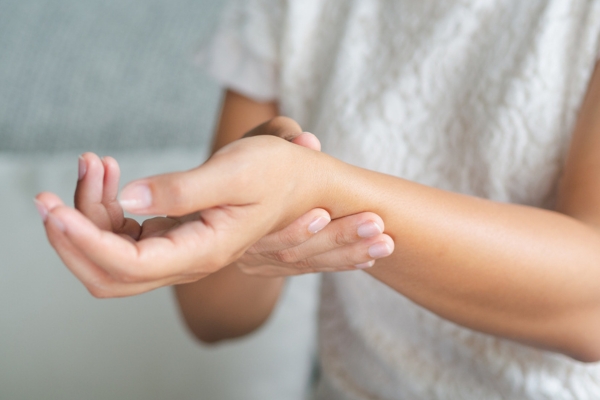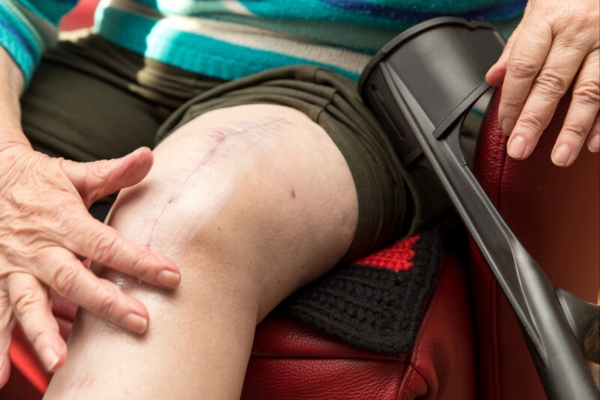CRPS is a chronic, often misunderstood nerve condition that causes intense pain, sensitivity, and physical changes—typically following an injury or surgery. At the Center for Regenerative Therapy & Pain Management, we provide non-surgical, image-guided treatments that target the nerves responsible for your pain. Our goal is to reduce symptoms, restore mobility, and help you regain control of your life.
Complex Regional Pain Syndrome (CRPS) is a chronic nerve disorder that typically affects a limb—such as the arm, leg, hand, or foot—and causes prolonged pain that feels disproportionate to the original injury. It often begins after a minor trauma, surgery, or immobilization but lingers far beyond the expected healing timeline.
There are two main types: CRPS Type I, which occurs without confirmed nerve injury, and CRPS Type II, where a specific nerve injury is identified. Early diagnosis and treatment are critical to preventing long-term complications like muscle wasting, joint stiffness, or spread of symptoms.
By targeting this space, epidural injections help reduce swelling and nerve irritation, providing pain relief for patients suffering from back, neck, or radiating nerve pain. This minimally invasive procedure is often used when conservative treatments like physical therapy or oral medications haven’t provided enough relief.

Even minor injuries such as a wrist fracture or ankle sprain can lead to intense, lingering pain and hypersensitivity in the affected area.
Inactivity, casts, or complications during healing can alter blood flow and nerve signaling, triggering a CRPS response.
Repeated stress or overuse of a limb—especially during recovery from an injury—can aggravate nerves and tissues, potentially leading to abnormal pain responses and the onset of CRPS.
In some cases, CRPS develops without a clearly identifiable trigger, making diagnosis more complex and requiring symptom-based evaluation.
Direct trauma to nerves (as in CRPS Type II) may cause abnormal nerve signals, pain, and dysfunction long after the initial injury.
Post-surgical inflammation or nerve irritation may initiate CRPS, especially if the limb is immobilized during recovery.

Symptoms can vary from person to person and often affect the skin, circulation, and musculoskeletal function in the affected limb.
Burning or throbbing pain, usually in a limb
Skin sensitivity or pain from light touch (allodynia)
Swelling, redness, or temperature changes
Shiny, thin, or discolored skin
Limited range of motion or stiffness
Changes in hair or nail growth on the affected area
CRPS is diagnosed clinically through a combination of your medical history, symptoms, and physical examination.
We may perform sensory testing to evaluate temperature sensitivity and movement limitations, and use sympathetic nerve blocks to assess how your nerves respond. Imaging such as bone scans, thermography, or MRI can help rule out other conditions. In some cases, blood tests are ordered to rule out infection or autoimmune disorders.
Temporarily block overactive nerves to reduce pain, swelling, and skin sensitivity in the affected limb.
Delivers electrical signals to interrupt pain messages traveling to the brain and provide long-term relief for chronic cases.
Target tense or overactive muscles around the affected area to ease discomfort and improve mobility.
Includes non-opioid therapies to reduce nerve sensitivity and inflammation while supporting overall pain control.
Helps restore motion, prevent muscle atrophy, and retrain the limb to function properly again with gradual movement.
Chronic pain affects mental health. We coordinate with pain psychologists as needed to support emotional wellbeing.
If your symptoms are worsening or your pain feels excessive compared to the original injury, don’t wait to seek help. CRPS is most treatable when caught early.
Pain lasting more than a few weeks post-injury or surgery
Sensitivity to touch, temperature, or light pressure
Swelling, redness, or changes in skin texture
Difficulty moving or using the affected limb
No response to basic care or medications

CRPS may be a complex condition, but with expert diagnosis and customized treatment, it doesn’t have to define your life. We’ll help you with pain management, restore movement, and move forward with confidence.
Complex Pain Syndrome
CRPS is a chronic nerve condition that usually begins after an injury or surgery. It causes prolonged, intense pain that is out of proportion to the original event. The exact cause isn’t fully understood but involves nervous system dysfunction.
Pain that worsens over time, spreads beyond the injury site, or comes with skin sensitivity, temperature changes, or swelling may indicate CRPS. If basic treatments aren’t helping after a few weeks, a specialist should evaluate your symptoms.
CRPS can improve significantly with early and consistent treatment. In some cases, symptoms resolve completely; in others, they can be managed long-term. Delaying care increases the risk of permanent changes.
Yes, in some cases, CRPS may spread to another limb or area—especially if left untreated. This makes early intervention critical to limiting the condition’s progression.
Type I occurs without confirmed nerve injury, while Type II involves a known nerve injury. Both types share similar symptoms and are treated using the same interventional strategies.
Yes. Sympathetic nerve blocks can quickly reduce pain and inflammation in many patients. They’re also used as a diagnostic tool to confirm CRPS and guide ongoing care.
If done too aggressively, yes—but when customized and introduced gradually, it’s one of the most important parts of treatment. Gentle movement helps prevent joint stiffness and improves circulation.
Untreated CRPS can lead to permanent changes in skin, muscles, and bones. It can also result in long-term disability. Early diagnosis and treatment are essential for the best outcome.

We provide advanced, personalized pain management care for patients across New Jersey, led by board-certified specialist Dr. Shane Huch.
Center for Regenerative Therapy and Pain Management © All Rights Reserved | A Division of Toms River Anesthesia Associates